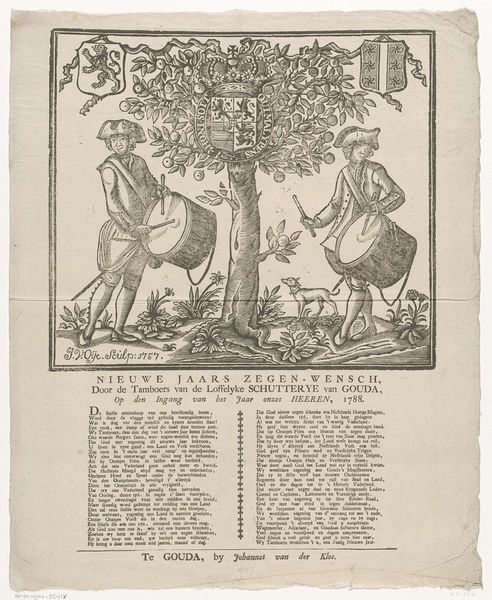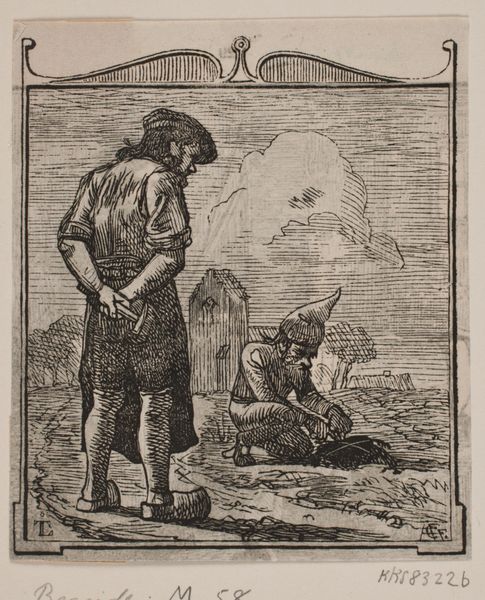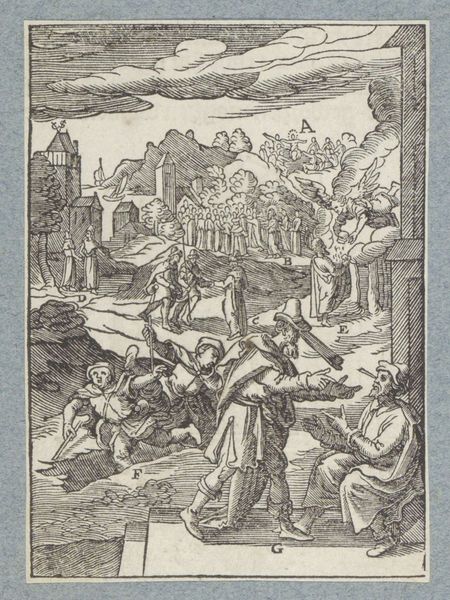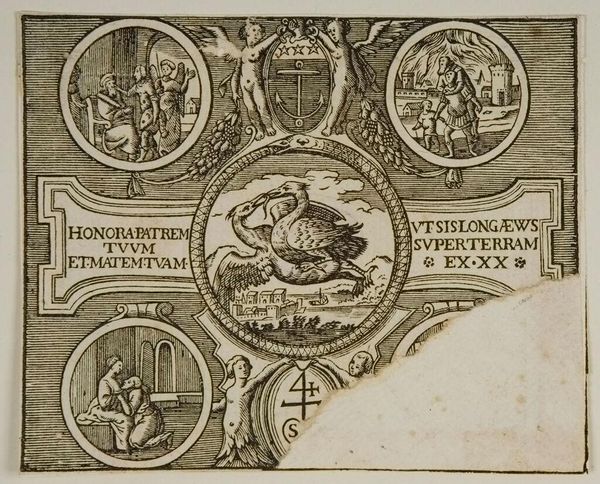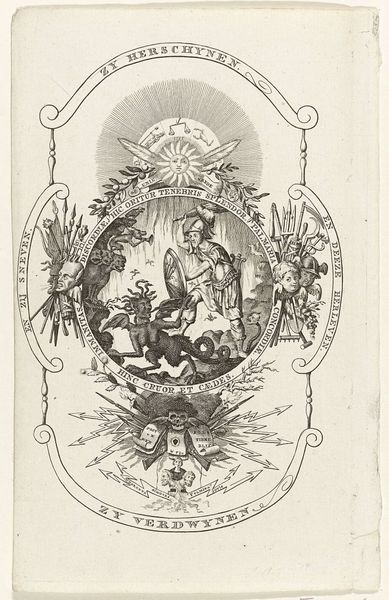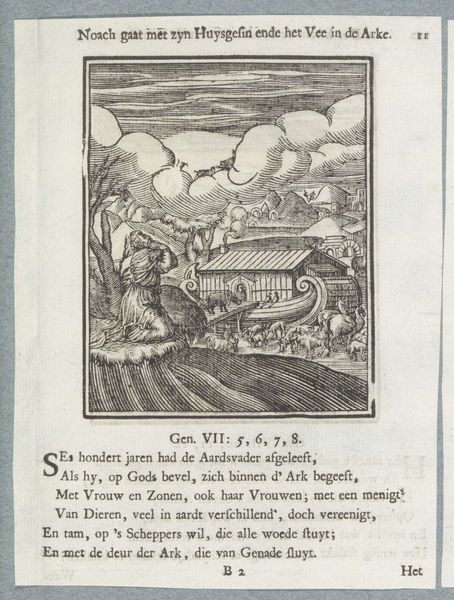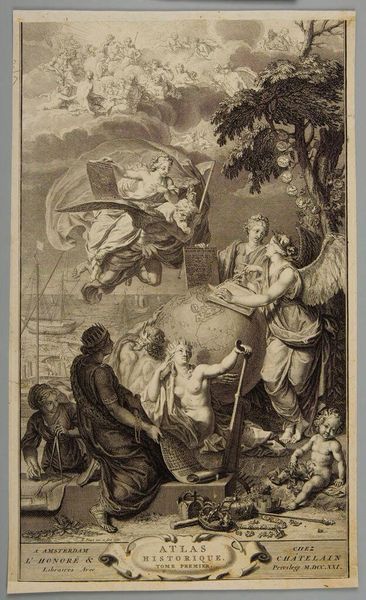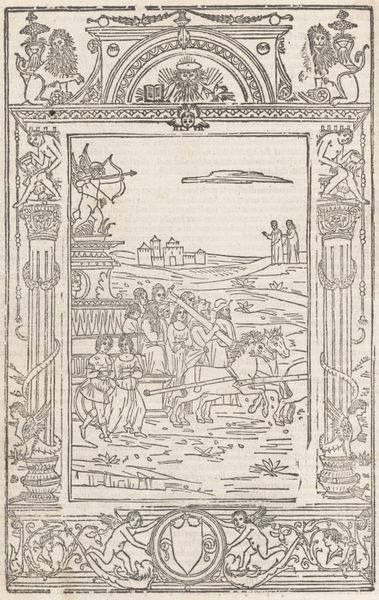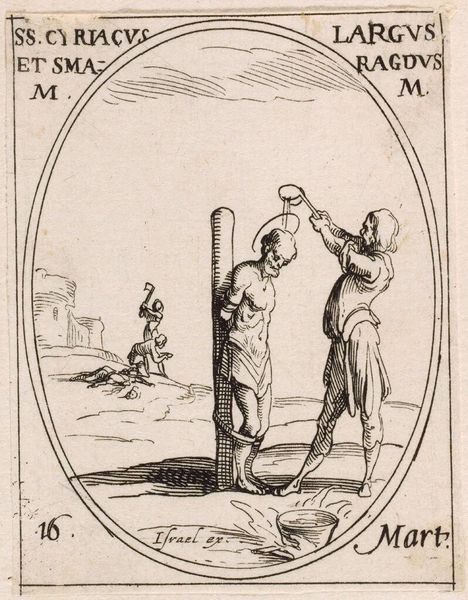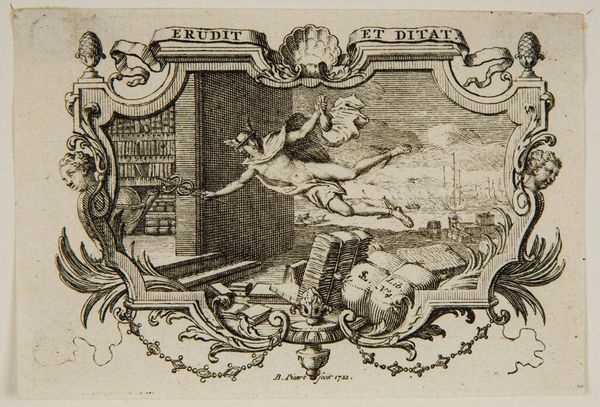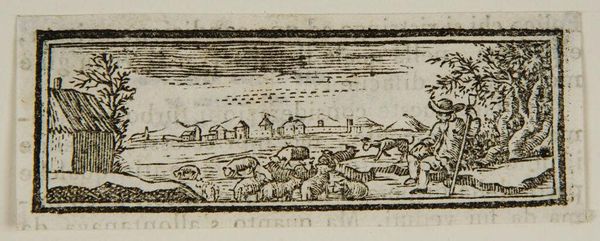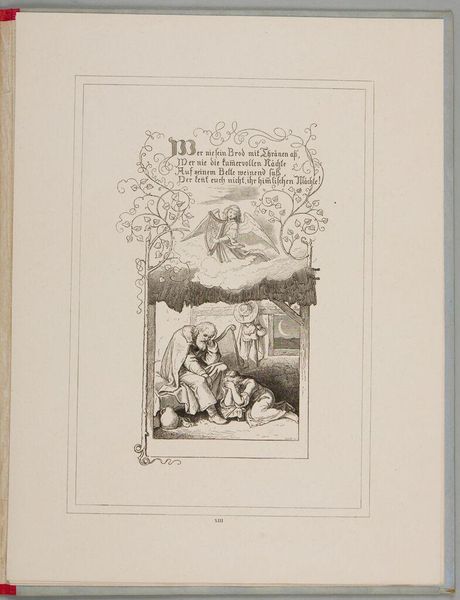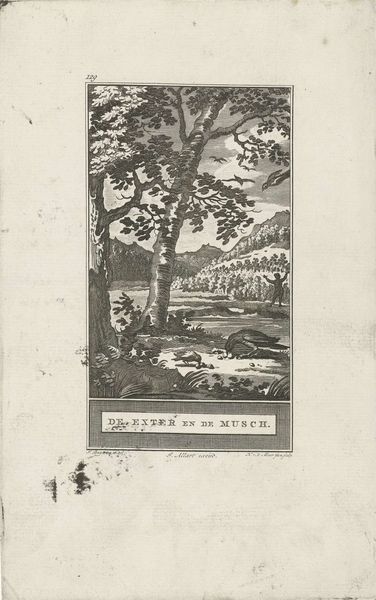
drawing, print, ink, poster
#
drawing
#
pen drawing
# print
#
landscape
#
soviet-nonconformist-art
#
ink
#
poster
Copyright: Public domain
Editor: So, this ink and print drawing is titled *E. Zamyatin "The District"* and was made in 1923. It seems to depict a melancholic village scene, but rendered with bold lines like a woodcut. What catches your eye when you look at it? Curator: The overall tone definitely evokes a sense of quiet desperation. I am interested in how Zamyatin and Kustodiev engage in a discourse using shared visual and emotional lexicons. Notice the stylistic similarities, how these signs recur in different contexts, carrying emotional weight across generations. The weary figure in the foreground is juxtaposed with the almost idyllic backdrop. Do you see any contrast? Editor: Yes! It’s like the figure represents a weight or burden contrasting to the lightness of the trees and even the church in the distance. Almost as if to say something about an ending? Curator: Indeed. The clouds, too, are symbolically laden—are they harbingers of change or are they illusions, failed attempts at representing the vastness of nature through reductive geometric shapes? Think about what "The District" represented in 1923, and how that meaning shifts or resonates today. How much did the economic changes after the Civil War impact their perspectives on reality? Editor: I guess there’s so much more there than I initially noticed – all of this layered symbolism hinting at socio-political concerns of the time. Curator: Exactly! The artist uses archetypes and symbols to construct layers of meaning that reflect both collective anxieties and individual experiences. Even now, a hundred years later, the figure holds this sense of weary contemplation, it suggests a larger, ongoing psychological and cultural narrative. Editor: I hadn't thought about it that deeply! Now it’s hard not to see it that way! Curator: The persistence of such imagery over time is precisely why this kind of symbolism continues to be relevant.
Comments
No comments
Be the first to comment and join the conversation on the ultimate creative platform.
